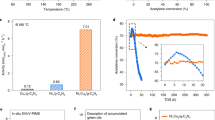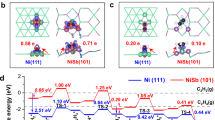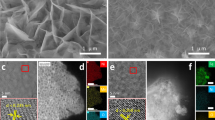Abstract
THE mechanism of the hydrogenation of ethylene on nickel has been studied intensively for at least thirty years; but there is still little agreement as to the exact nature of the intermediates present on the metal surface during the reaction. On the other hand, examination of the chemisorption and dissociation of ethylene on nickel in the absence of gaseous hydrogen has been slight and mostly confined to ambient temperatures1,2. This is surprising as the products and mechanism of ethylene dissociation can play an important part in hydrogenation, exchange and other reactions.
This is a preview of subscription content, access via your institution
Access options
Subscribe to this journal
Receive 51 print issues and online access
$199.00 per year
only $3.90 per issue
Buy this article
- Purchase on SpringerLink
- Instant access to full article PDF
Prices may be subject to local taxes which are calculated during checkout
Similar content being viewed by others
References
Rideal, E. K., and Jenkins, G. I., J. Chem. Soc., 2490 (1955).
Eischens, R. P., and Pliskin, W. A., Adv. in Catalysis, 10, 1 (1958).
Beeck, O., Rev. Mod. Phys., 17, 61 (1945).
Morikawa, K., Trenner, N. R., and Taylor, H. S., J. Amer. Chem. Soc., 59, 1103 (1937).
Pickering, H. L., and Eckstrom, A. C., J. Phys. Chem., 63, 512 (1959).
Sabatier, P., La Catalyse en Chimie Organique (Paris, 1920).
Author information
Authors and Affiliations
Rights and permissions
About this article
Cite this article
McKEE, D. Catalytic Decomposition of Ethylene on Nickel. Nature 192, 654–655 (1961). https://doi.org/10.1038/192654a0
Issue date:
DOI: https://doi.org/10.1038/192654a0



